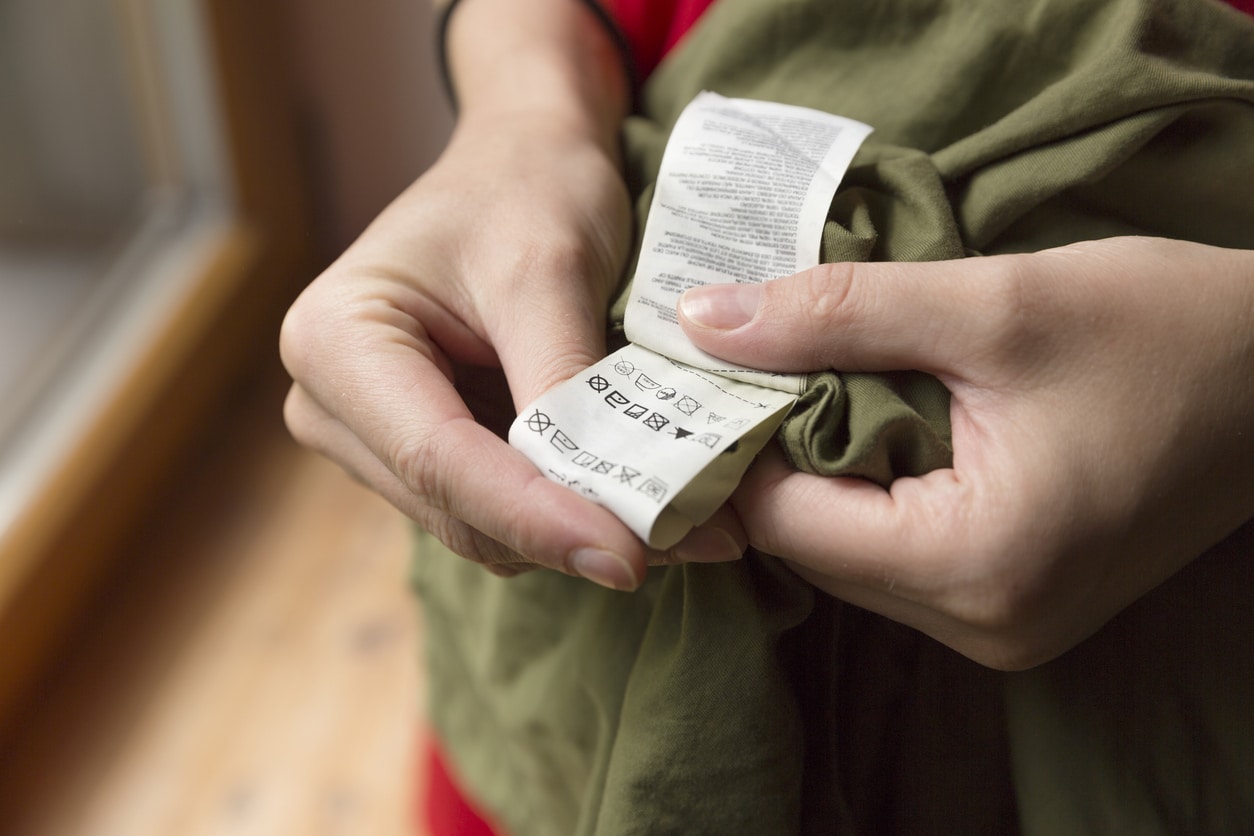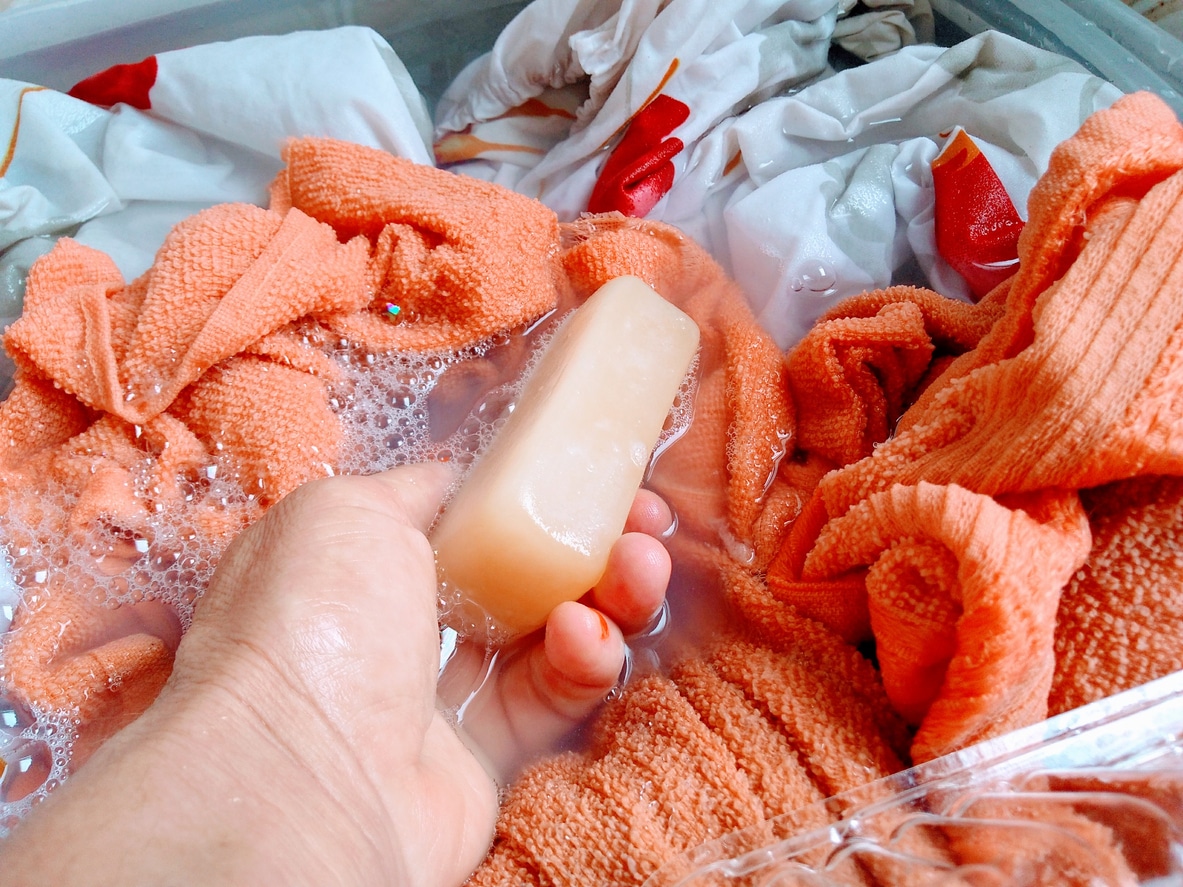Stain removal, washing, ironing… laundry care is not an easy household task and can even be very time-consuming. However, things can get even trickier when it comes to a delicate item of clothing that has “Dry Clean Only” on the label. In fact, we immediately imagine that we will have to rush to the nearest dry cleaner to do a dry wash that we cannot necessarily afford. However, as you will see: you can actually dry clean most of your delicates yourself! And what’s more, it’s not very complicated. You just need to use common sense and use the right actions. Here’s what you need to know to make big savings on dry cleaning without ruining your clothes or damaging your washing machine.
Going through dry cleaning and dry cleaning, an imperative?
Often the instructions on washing labels are not only recommendations. So you have to take them like that, especially since many manufacturers just recommend dry cleaning to protect themselves. So, if the maintenance does not go well, it is not their fault, but that of the professional cleaners or the users.
Fortunately, with a gentle washing method and suitable household products, you can maintain the vast majority of fragile textiles yourself without risk and without being exposed to irritating chemicals used in some dry cleaners. This applies for example to knitwear (wool, cashmere, angora, mohair, etc.), pieces made of natural fibers (linen, cotton, silk, etc.), delicate synthetic fibers (viscose, polyester, elastane, etc.), and simply made clothing ( without complicated lining or sewing). Also know that the fiber blends make fabrics more machine washableespecially if there are fibers of synthetic origin. And if you really doubt, you can do it by hand!

Which clothes are best left for the dry cleaner?
You will have understood: you can clean most clothes at home, even if the label says otherwise. However, it may be wiser to call on a cleaning professional in certain specific cases :
-For suede, velvet, taffeta, rayon, and leather as well as anything containing fur, lining, and down
-If there are pearls, sequins or metallic ornaments on the garment
-In the case of pleated skirts and structured suits or coats
You should also not hesitate to use common sense. For a very expensive item or one that has sentimental valueit’s better to play it safe if you’re not sure of yourself, especially for a piece of clothing that you really love. On the other hand, paying a lot for dry cleaning for a part that did not cost much and which will have to be taken to the professional will not be worth the cost at all.
How can you be sure that you can do the cleaning yourself?

If you are still in doubt, do not hesitate to check the label of your clothing. You will be able to check the material and glean tips for cleaning it from the internet. It is also possible to consult reviews when there are any on the seller’s website to check whether the clothes in question hold up well when washed.
You can also do the cotton swab test to identify the risks of discoloration and check whether a fabric is resistant to washing before cleaning it by hand or in the washing machine. This allows you to get started with more peace of mind! To do this, take a cotton swab and a little cold water poured into a bowl with 2 to 3 drops of the mild detergent you plan to use. (If you don’t have one, you can make it yourself with two ingredients.) Then, all you have to do is rub the mixture on an inconspicuous area (for example the inside seam). If the color of the garment bleeds, head to the dry cleaners ! Otherwise, you can wash it without risk.
How to replace dry cleaning at home?

There are two main techniques: machine washing for cotton, linen or even polyester and hand washing for knitwear, silk and all clothing about which we have doubts. It is indeed the safest and gentlest method. Besides, let’s see how to do it right away!
How to wash delicate laundry by hand?
Provide a basin, sink or bathtub here, as well as a mild detergent. Pour cold water into your container, then add a small amount of detergent. Do not overdo it as it risks making the product difficult to rinse. ! Once the water is a little foamy, slide your garment completely into it. Using your fingers, then very gently rub the stained areas, then drain the water and fill your container again, this time with just water. Rinse the garment carefully and gently. Finally, remove as much water as possible without twisting or wringing the fabric. We explain to you below how to dry it without deforming it.
How to machine wash fragile laundry?
Here too, use a gentle detergent, as usual cleaning products can be too aggressive for delicate laundry. Then carry out a wash in cold water, selecting the gentlest program. The one for wool and delicates will work great if there is one. If necessary, refer to the instructions for use to find out the correct cycle. Above all, wash fragile laundry separately, always inside out and in a laundry net to avoid snags during cleaning.
Other Tips for Clothes Needing Dry Cleaning
If the garment is little dirtyyou can freshen it up… with flour! And now, we can really talk about dry cleaning. Indeed, no water will then be used. To dry clean with flour, simply slip the garment into a tightly closed bag with a few handfuls of flour. Then shake the bag well, take out the garment, shake it out and brush it if necessary. It’s simple, very effective and fast! Another option is to invest in a dry cleaning kit. However, be careful: you will need a dryer to use it.
How to unfasten and dry delicate laundry?

How to remove fragile laundry before home dry cleaning?
If the laundry has a stain that may not be removed with the washing solutions presented earlier, prior stain removal is required. To do this, work on a dry fabric and concentrate the textile stain remover on the stain. Do not hesitate to test this same product on an inconspicuous corner for greater safety. However, if you use Marseille soap, black soap or even bicarbonate, the gentlest natural stain removers, it should not cause any discoloration.
As for drying…
As explained earlier, it is essential to do not twist or wring the fabric if you don’t want to damage or deform it. To dry it, just lay it flat on a large terry towel that you roll up on itself. This will allowabsorb moisture within the fibers without damaging them. Then, place the garment back on a drier corner (or another towel) and repeat 3 to 5 times to remove as much water as possible. You can then dry the laundry flat, in the open air, and use a steam iron to remove any wrinkles and disinfect the laundry.


